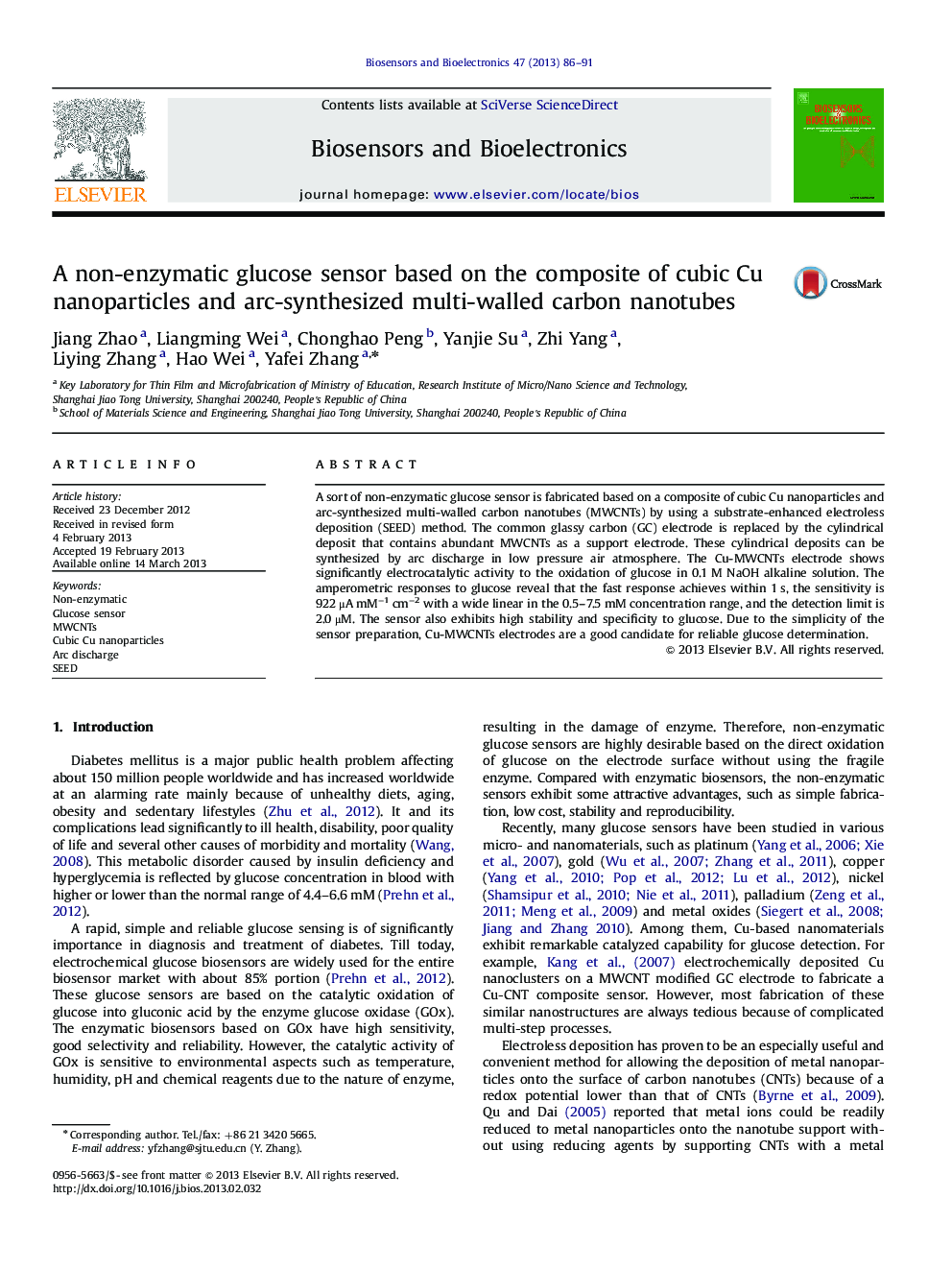| Article ID | Journal | Published Year | Pages | File Type |
|---|---|---|---|---|
| 866945 | Biosensors and Bioelectronics | 2013 | 6 Pages |
► Cylindrical deposits are synthesized by arc discharge in low pressure air.► The cylindrical deposit replaces the common glass carbon electrode as support electrode.► A novel SEED process is used for preparing Cu-MWCNTs electrode.► The glucose biosensor exhibits an excellent electrochemical behavior.► The sensitivity is 922 μA mM−1 cm−2 with a wide linear in the 0.5–7.5 mM concentration range.
A sort of non-enzymatic glucose sensor is fabricated based on a composite of cubic Cu nanoparticles and arc-synthesized multi-walled carbon nanotubes (MWCNTs) by using a substrate-enhanced electroless deposition (SEED) method. The common glassy carbon (GC) electrode is replaced by the cylindrical deposit that contains abundant MWCNTs as a support electrode. These cylindrical deposits can be synthesized by arc discharge in low pressure air atmosphere. The Cu-MWCNTs electrode shows significantly electrocatalytic activity to the oxidation of glucose in 0.1 M NaOH alkaline solution. The amperometric responses to glucose reveal that the fast response achieves within 1 s, the sensitivity is 922 μA mM−1 cm−2 with a wide linear in the 0.5–7.5 mM concentration range, and the detection limit is 2.0 μM. The sensor also exhibits high stability and specificity to glucose. Due to the simplicity of the sensor preparation, Cu-MWCNTs electrodes are a good candidate for reliable glucose determination.
